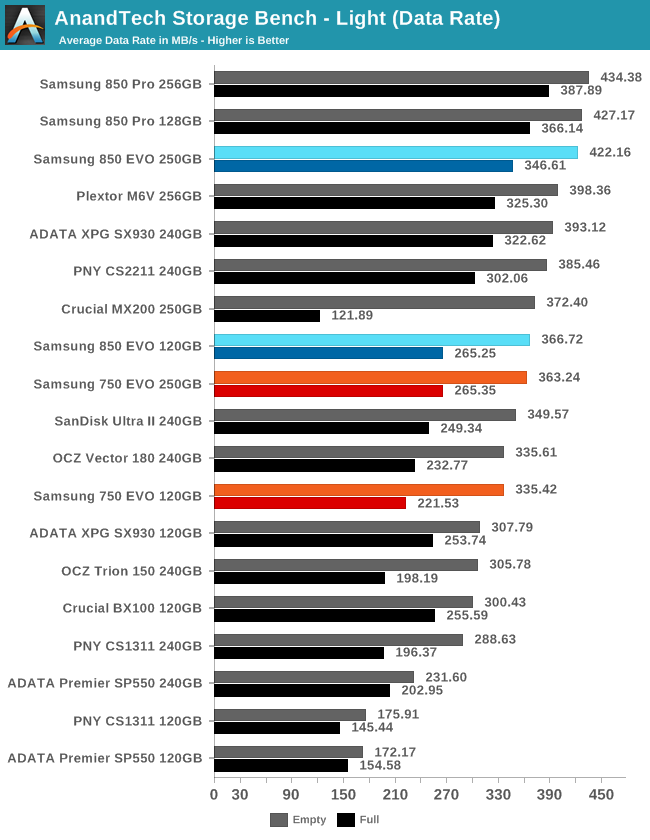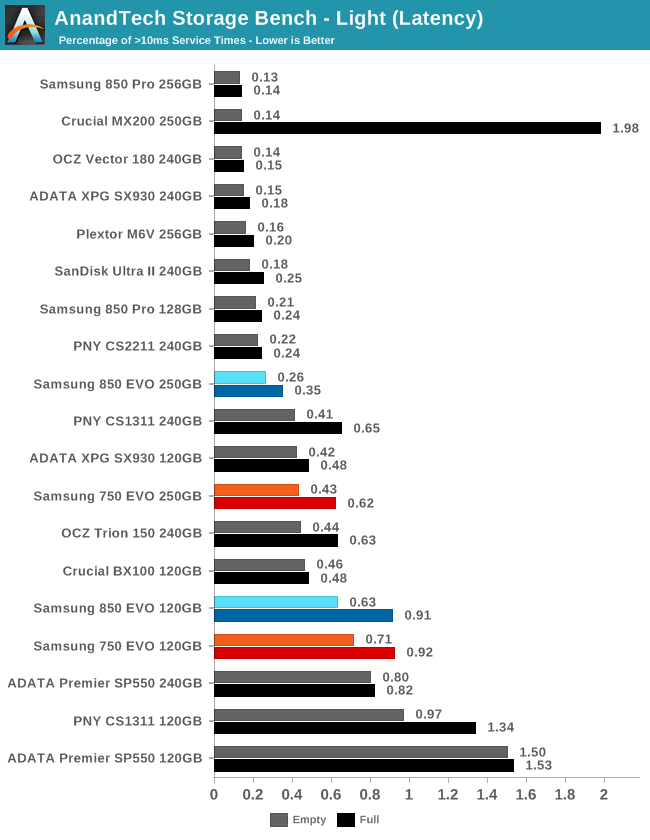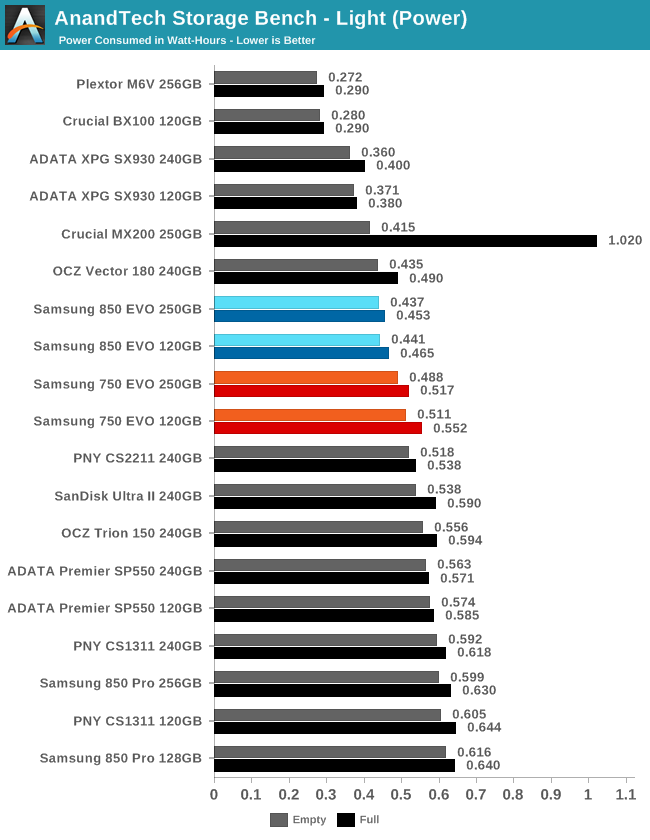The Samsung 750 EVO (120GB & 250GB) SSD Review: A Return To Planar NAND
by Billy Tallis on April 22, 2016 8:00 AM ESTAnandTech Storage Bench - Light
Our Light storage test has relatively more sequential accesses and lower queue depths than The Destroyer or the Heavy test, and it's by far the shortest test overall. It's based largely on applications that aren't highly dependent on storage performance, so this is a test more of application launch times and file load times. This test can be seen as the sum of all the little delays in daily usage, but with the idle times trimmed to 25ms it takes less than half an hour to run. Details of the Light test can be found here.

The average data rate scores of the 750 EVOs allow it to blend in to the crowd as a solid performer and the fastest planar TLC drive on the Light test.

The average service time of the 750 EVO again places it as one of the fastest planar TLC drives and a reasonable performer compared to the SATA market overall. The 120GB 750 EVO is also relatively close to the 250GB version, while other 120GB models are considerably slower than their larger counterparts.

The number of latency outliers experienced by the 750 EVO in the Light test is normal for TLC drives but considerably higher than most MLC drives.

Power usage over the course of the Light test separates the drives pretty cleanly into different categories. The 750 EVO clearly requires more power than the 850 EVO, and all the other TLC drives require more power than the 750 EVO. The MLC drives all require less energy than all the TLC drives, except that the 850 Pro sacrifices efficiency to deliver its high performance.










109 Comments
View All Comments
ewitte - Tuesday, May 24, 2016 - link
System builders will likely go even cheaper there are a lot of 240GB drives around $60. Nearly a $20 difference.Murloc - Saturday, April 23, 2016 - link
They're going to put it into computers and write "Samsung SSD inside" and it will be cheaper for the system builders, but the average customer will not be able to tell the difference.So yes, it's a winner.
lilmoe - Friday, April 22, 2016 - link
You think $10 is worth the downgrade? Bruh...5th element - Friday, April 22, 2016 - link
To the 3rd party selling complete machines to the everyday masses yeah. Like haukionkannel said above. Most people out there aren't tech heads and the lower £££ matters.lilmoe - Saturday, April 23, 2016 - link
Sure, but the price difference is even lower with higher volume...nathanddrews - Friday, April 22, 2016 - link
Meh.Thanks for the great review - as always. The "meh" is just for the drive itself.
nathanddrews - Friday, April 22, 2016 - link
The problem I have with SSDs right now is that they're so boring to me. What I need in my life are consumer grade NVMe 2TB+ SSDs. I'm sick and tired of buying multiple SSDs or splitting my application and data across SSDs and HDDs. One drive to rule them all, please.TheinsanegamerN - Friday, April 22, 2016 - link
We should probably work on getting 1TB drives out and purchasable before worrying about 2TB models.vanilla_gorilla - Friday, April 22, 2016 - link
Samsung 850 EVO 1TB SSD are $291 on Amazon (Prime) right now. And the Samsung 850 EVO 2TB is the same price per gigabyte ($600 for 2TB).Meteor2 - Friday, April 22, 2016 - link
I don't know about 2+ TB but definitely more 1 TB NVMe drives. SATA is yesterday's tech.